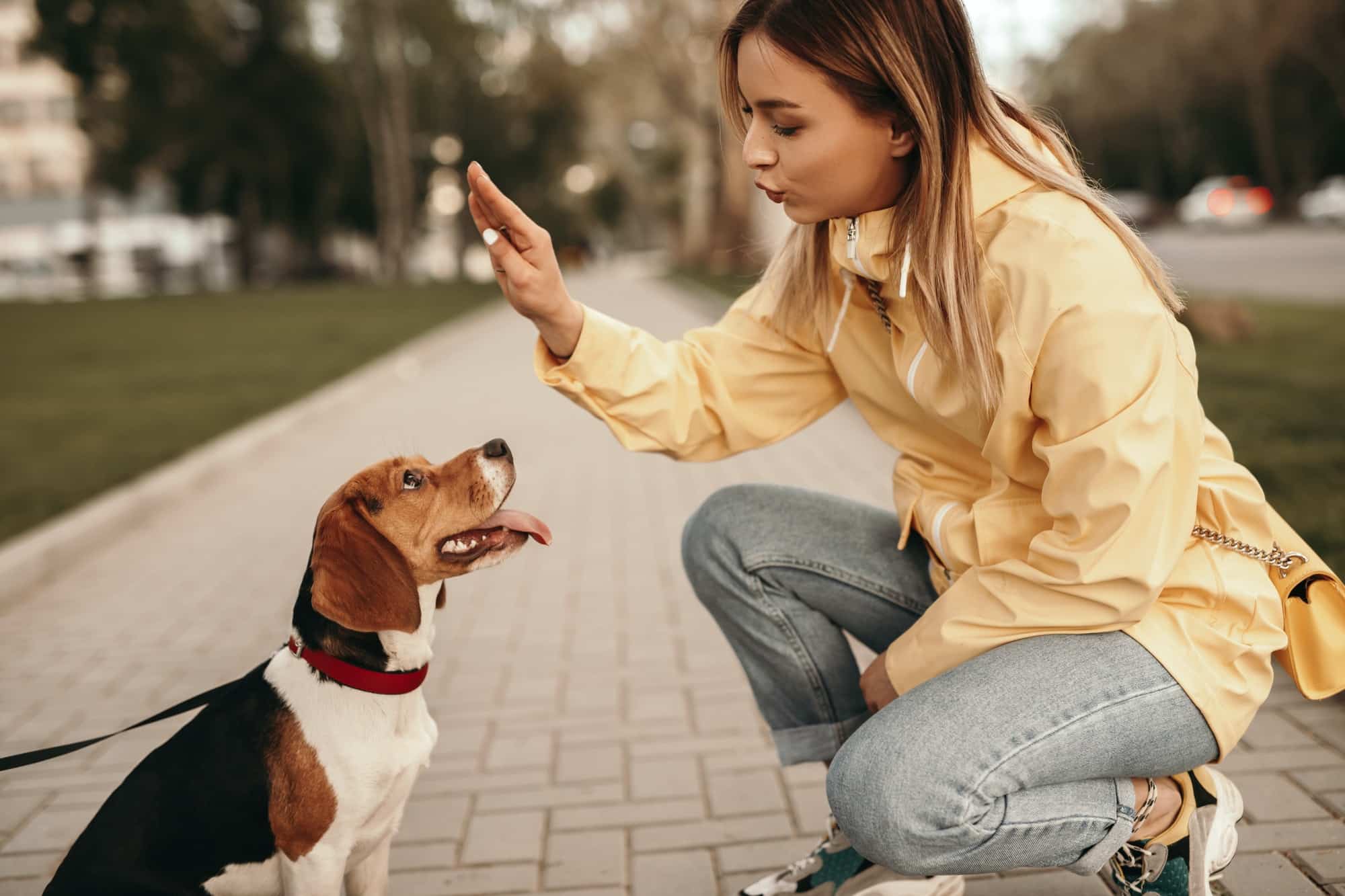How to Choose and Effectively Use a Gentle Leader for a Strong Pulling Dog?

As a dog owner, you understand the importance of regular exercise for your furry friend. Walks provide not only physical stimulation but also mental enrichment. However, this task can be quite daunting if your beloved dog has a propensity to pull on their leash. This article aims to shed light on a highly effective training tool in such scenarios, the gentle leader.
We will delve into the process of choosing a gentle leader that fits your dog perfectly, and the step-by-step guide to using it effectively during leash training. Armed with this information, you should be able to transform those taxing walks into pleasant, controlled experiences.
A lire en complément : How to Choose the Right Size and Type of Birdcage for a Pair of Cockatiels?
Understanding the Gentle Leader
Before we dive into the specifics of choosing and utilizing a gentle leader, it’s essential to familiarize yourselves with what it is, and what it isn’t. Unlike traditional neck collars, a gentle leader fits around your dog’s muzzle and the back of their head.
The gentle leader is not a muzzle in the sense that it doesn’t prevent your dog from opening their mouth, drinking, or eating. Instead, it’s a head halter – a tool similar to what you’d see on horses. It provides control without the need for physical force.
Avez-vous vu cela : How to Develop a Positive Reinforcement Training Plan for a Stubborn Bulldog?
There’s a strap that goes around the nose and another that hooks behind the ears. When your dog pulls, the design of the gentle leader steers their head towards you. This disorientation often discourages further pulling.
Choosing the Right Size and Fit
A gentle leader needs to be the right fit to function effectively and comfortably for your dog. A too-loose halter will fail to provide the necessary control, while a too-tight one will cause discomfort and potentially harm.
When choosing a gentle leader, its nose strap should fit comfortably around your dog’s nose. It should be high on their neck, just behind the ears. The nose loop should not squeeze tightly around your dog’s nose but sit loose enough for the neck strap to slide to the fleshy part of the nose when they pull.
You should be able to fit two fingers between the neck strap and your dog’s neck. The nose loop should also allow enough room for your dog’s mouth to open fully.
Using the Gentle Leader for Leash Training
Once you’ve acquired the perfect gentle leader for your dog, it’s time to train them to get used to it. Remember, dogs don’t automatically know how to behave with a head halter on. Moreover, many dogs initially resist it because it’s a different sensation than a neck collar.
Start by letting your dog sniff and inspect the gentle leader. Reward them with treats when they show curiosity, fostering a positive association. Next, with the help of treats, encourage your dog to put their nose through the loop.
During the initial stages, only keep the gentle leader on for short periods. Gradually increase the duration as your dog becomes more comfortable.
The Importance of Patience and Consistency
Training your dog to walk with a gentle leader requires patience and consistency. It’s important to remember that the gentle leader is not a miracle cure for pulling. It’s a training tool. It helps you communicate with your dog in a way that they understand.
Start training in a quiet, familiar environment to help minimize distractions. Use positive reinforcement like treats, praise, or toys whenever your dog shows good behavior. Avoid yanking or pulling on the leash while using the gentle leader, as it might cause harm or create a negative experience.
Balancing Leadership with Affection
The gentle leader is a tool that helps you assert yourself as the leader during walks. However, it’s crucial to balance this leadership with affection. Dogs respond best to training methods that incorporate positive reinforcement.
A crucial aspect of successful gentle leader training is creating a bond of trust with your dog. Show them love, affection, and reward them for good behavior. The gentle leader should never be a tool for punishment but rather an aid to guide your dog towards better leash manners.
Navigating the world of dog training can be confusing and daunting. But with the right tools and approach, it can become a rewarding journey for both you and your dog. The gentle leader, coupled with consistent, positive training methods, can be a game-changer for those struggling with strong pulling dogs.
Implementing Training with the Gentle Leader
Implementing effective training with the gentle leader head halter requires diligence and a clear understanding of the process. The first step is ensuring that you’ve adjusted the head halter to the right fit. This means the neck strap should be snug but not tight, and the nose loop should allow your dog’s head full movement.
The next step is to introduce your dog to the gentle leader. This should be done in a calm, distraction-free environment. Do not force the gentle leader onto your dog’s head. Instead, use treats and praise to encourage your dog to explore the gentle leader. Allow them to sniff it and get comfortable with its presence.
The third step is to put the gentle leader on your dog. This should be done slowly and with patience. Reward your dog with treats and praise as you put on the gentle leader. This positive reinforcement helps to create a positive association with the head halter.
The fourth step is to acclimate your dog to the gentle leader. Start with short periods of wearing the gentle leader, gradually increasing the duration as your dog becomes more comfortable. During this acclimation period, continue treating and praising your dog. This positive reinforcement reinforces the association of the gentle leader with good things.
The final step is to start leash training. Start in a familiar, low-distraction environment. Your dog may be disoriented initially due to the different sensation of the gentle leader. Be patient, and use positive reinforcement to encourage your dog to walk with the gentle leader. Avoid yanking the leash – the objective is to guide your dog, not control them forcibly.
Harnessing the Power of the Gentle Leader: A Conclusion
In conclusion, the gentle leader headcollar is an invaluable tool for dog owners struggling with dogs that pull. It’s a humane, effective method to train dogs to walk on a loose leash and promotes better communication between you and your pet.
The gentle leader is not a quick fix but rather a training tool that requires consistent use and gradual training. Do not expect instant results, but with time, patience, and positive reinforcement, you can expect significant improvements in your dog’s walking habits.
A crucial point to remember is that the gentle leader is not a substitute for good dog training practices. It is a tool to aid in your training efforts and should be used in conjunction with other training methods and rewards.
And lastly, the gentle leader should never be used as a punishment tool. It’s a device to guide, not to control. Always remember to balance leadership with affection, and reward your dog for good behavior.
With the right approach, the gentle leader can transform your walks from a stressful tug of war into pleasant, relaxed outings with your pet. Remember, the key is patience, consistency, and positive reinforcement.
